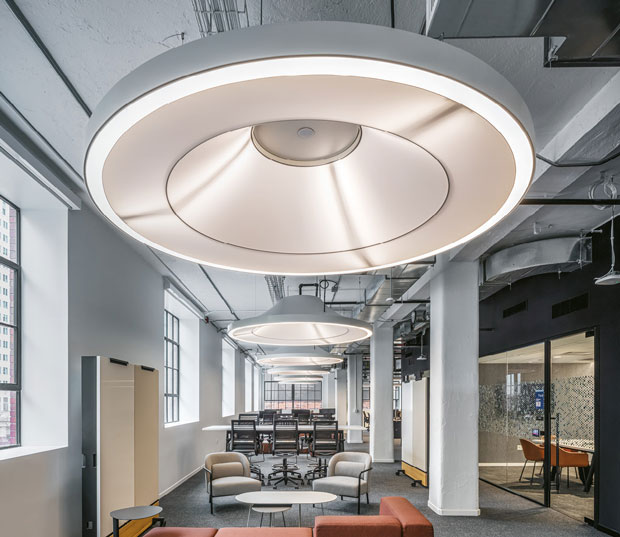Helen Parton of Informare explores post-pandemic lighting solutions, from addressing unoccupied areas in buildings to ways of saving energy and increasing efficiencies for hybrid working
So much has happened in the last two and a half years that the role of the office and its running is unrecognisable compared with spring 2020. Research released in summer 2022 from real estate firm Savills into occupancy levels on the average number of office workers in a workspace over the course of a working week in the central business district of various European cities confirms this. It found that the City of London has one of the lowest occupancy rates at 32 per cent (the West End faring a little better at 38 per cent) with Paris topping the chart at 54 per cent, closely followed by Madrid at 52 per cent.
Meanwhile in figures released in May, the Office for National Statistics (ONS) reported that 84 per cent of workers who had worked from home during the Covid-19 pandemic planned to continue a mix of WFH and office-based activity. The hybrid model of working seems here to stay.
STAYING IN CONTROL
Lighting is one area that can support hybrid working patterns. Lighting control specialists Prolojik has worked on a number of office schemes where its technology is able to assist facilities managers and other stakeholders with identifying unoccupied areas of a building and avoiding wasting energy on them. Its Plexus system was supplied and installed at Bloom, an office project in London’s Farringdon area. Here, developer HB Reavis wanted to make this 144,000 sq. ft mix of work, retail and amenity space world-class in terms of connectivity and flexibility. To this end, the first floor is given over to Ready To Work, (RTW) HB Reavis’ tech-enabled workspace area.
In a collaboration with Symbiosy, the Plexus system took a traditional Dali lighting system to incorporate high-end features such as space utilisation. Using the results from the dashboard about how tenants are using the space, the developer can now guide them about their space needs. Now with the ability to control and adapt the system by third parties, the system not only allows for energy efficiencies but better overall future proofing of the building, working with the Building Management System (BMS) to obtain data about space usage and user control. All of this forms part of the Internet of Things (IoT) which means that depending on where people are, regular adjustments can be made to the track lighting in the main workspace area and the adjustable lighting in the meeting rooms, as well as temperature control and HVAC.





